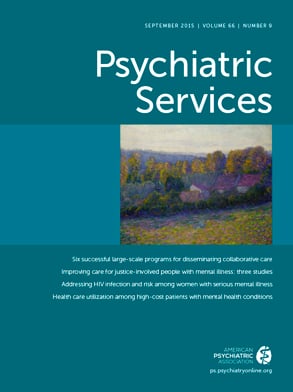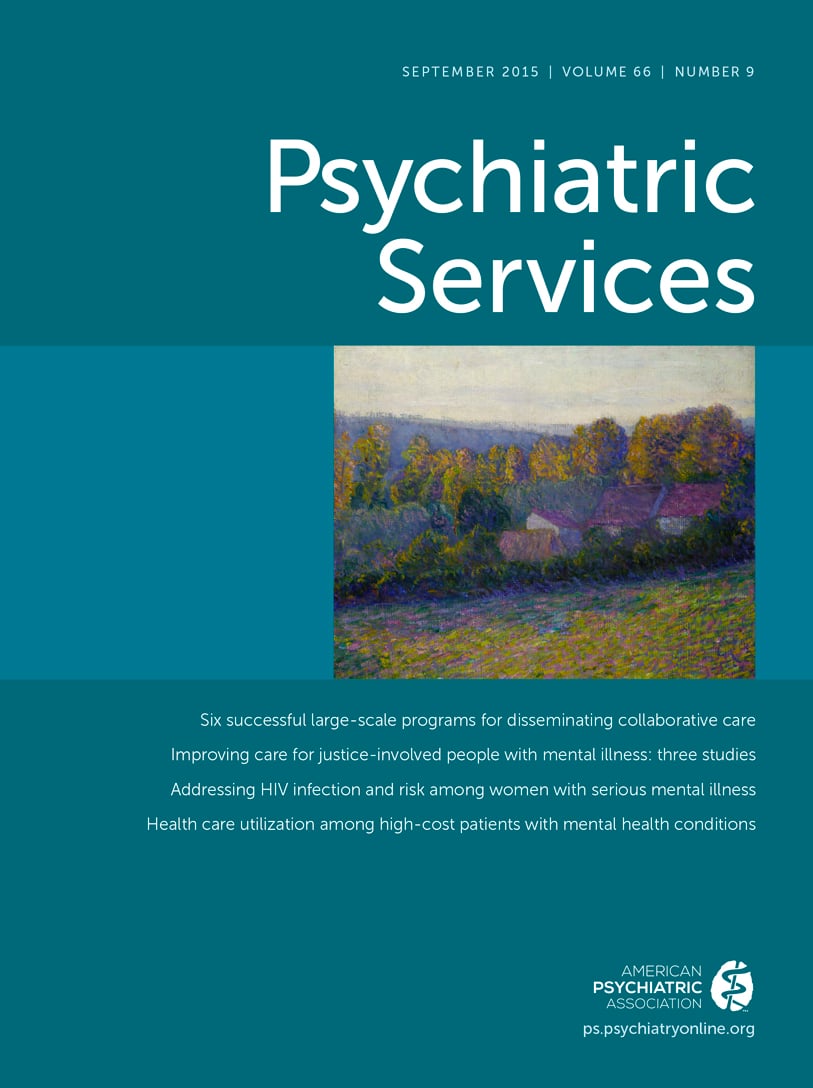With such strong evidence of effectiveness, why isn’t collaborative care viewed as usual practice? The movie
Field of Dreams was based on the idea that if you build it, they will come. Health care’s version is “Design it, and they will implement it.” Why should it take an average of 15 years for new research findings to move from publication to widespread dissemination? Collaborative care is a typical example: the first positive effectiveness trials were published in the early 1990s. Many innovations are examined in efficacy and effectiveness studies, but dissemination trials are rarely conducted, which deprives many people of effective treatments. Fitzgerald and colleagues (
4) examined why some innovations are rapidly disseminated and others are not. What makes clinical professionals decide to adopt an innovation and use it in their clinical practice? They found that the innovation must be effective and applicable to a large population and cost-neutral (or must save money), must increase patient satisfaction, and must not be complicated to implement. Disseminating a new medication is relatively simple compared with disseminating collaborative care, which requires a fundamental change in the system of care. The current fee-for-service reimbursement model creates a substantial disincentive, because there is minimal funding for care coordinators and for collaboration between clinicians.
Fortunately, the rapidly growing science of quality improvement helps accelerate the dissemination process. The learning collaborative is a particularly effective method for designing and adapting a new model of care delivery to diverse settings. Introduced over a decade ago, and promoted in the Institute for Healthcare Improvement’s Breakthrough Series (
5), learning collaboratives bring together content experts, change management experts, and motivated clinicians from multiple locations. This intensive process has been successful in overcoming inertia and barriers to dissemination. The key to this process is to start small with a group of early adopters willing to tolerate initial challenges. These early adopters use “plan-do-study-act” cycles to clarify adaptations to local system barriers that increase the chances that a new idea will work in a given environment (
6) and to assist in navigating a common challenge described by Kilbourne and colleagues (
7) as the “balance between adequate fidelity to the intervention and accommodating differences across organizations.” For complex system adaptations where there is some debate on the most workable approach in a given type of setting (for example, primary care) or when the approach is clear but may need to be adapted to a wide variety of environments (for example, a variety of primary care practice settings), a learning collaborative may prove invaluable. When systems are already in place but not ideal, other methodologies borrowed from industry may increase the quality and output of a given process (Six Sigma) or reduce waste (lean manufacturing). Although more research is needed on matching the appropriate methodology to the change envisioned (
8), change leaders have a number of options for moving their practice toward effective and efficient collaborative models. Frequently, the main barrier is financial, and a study by Unützer and colleagues (
9) suggested that linking key quality indicators to incentive payments can substantially improve fidelity and patient outcomes.

